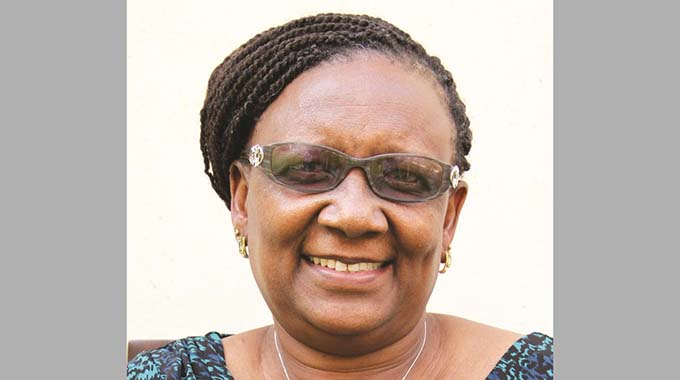Zim female musical artistes attract scholarly attention

Brian Maregedze Literature Today
Scholars of various academic disciplines based in Africa and the Diaspora, deploying various theoretical lenses, converge in this book and engage on the concept of ‘musical arts’ by offering refreshing nuances.
Gender dynamics within musical arts are dealt with in detail, which is a welcome contribution to academy and the general reader.
In 13 chapters, the authors, ranging from rising and young scholars to senior experts, work together in Victors, Victims & Villains: Women in Musical Arts in Zimbabwe — Past and Present (2018) which was edited by Bridget Chinouriri, Ushehwedu Kufakurinani and Munyaradzi Nyakudya, and published by University of Zimbabwe Publications.
In Chapter One, Nyakudya, Chinouriri and Kufakurinani historically explore women’s experiences in their participation in music from pre-colonial, colonial and post-colonial eras.
Their main thrust is that women are viewed as both victors and victims. Colonial historiography depicts women as relegated private spaces thereby falling into a replica of the Victorian domestic ideology which was dominated by male chauvinism.
Despite that, women used their agency in musical arts to negotiate for their voices under patriarchal hegemony in both urban and rural settings.
In chapters Two and Three, the authors build on the broader theme which dwells on the role of women in music performance.
Perminus Matiure focuses on music performance in Shona traditional societies guided by ethnographic evidence from Chikomba District in Mashonaland East. Thus, women played a pivotal role in performance of traditional music.
At the same time, Excellent Chireshe deploying content analysis, focuses on the famous “Dr Love” Paul Matavire using selected songs to analyse the way women are represented in his music.
The selected songs depict mixed “social locations” of women from being victims to villains and finally to victors. Matavire’s selected songs aptly fit into the title of the book as concluded by Chireshe.
In chapter Four, Jairos Gonye directs the discourse to selected literary works of Bernard Chidzero and Solomon Mutsvairo.
The two being male authors, portray their bias against women dancers because they depict them as sexual “toys”.
In chapter Five, Kufakurinani and his co-authors examine how women have been portrayed in selected Zimdancehall songs. More notable in their study is that, “the music industry is a microcosm of the macrocosm,” implying the representation of the broader Zimbabwean patriarchal society.
In as much as the aspect of women and victimhood emerges, Kufakurinani acknowledges partial emancipation, as well as the expanded space from Zimdancehall music as a genre.
The under-representation of women and their sexual objectification is critically addressed in chapter Six by Tanaka Chidora.
Furthermore, Chidora views female agency and freedom expressed in female dancehall aesthetics and performances as transcending what he refers to as the “hypocritical morality” of society which mainly works to convert women into adulators of men’s projects.
In chapter Seven, Kelvin Chikonzo and Portia Chifamba deal with the contentious issue of commercialisation of the feminine body with pole dancing dominating the debate.
The two authors observe that pole dancing equally belongs to that which celebrates and promotes commercialisation of the female body.
In chapter Eight, Reggmore Marongedze and Enock Machanja probe what they term “an artistic bazaar,” that is, the way female dancers particularly Sandra Ndebele and Beverly Sibanda exhibit erotic body manoeuvres as a survival strategy in the face of economic hardships.
Women are victors when deploying the concept of “artistic bazaar” as it is viewed as a survival strategy, which then coincides with Chidora’s notion of the emancipatory nature of Zimdancehall aesthetics and performances.
In chapter Nine, Gibson Ncube and Gugulethu move to the concept of marginalisation of the female music artistes, denouncing scholars for failing to address their plight in academic discourse.
Deploying Nick Stevenson’s theoretical framework on “cultural citizenship” and the late Italian Marxist scholar, Antonio Gramsci’s notion of hegemony, the two authors maintain the possibility for singers such as Busi Ncube, Sandra Ndebele and Dudu Mangena to rise to prominence.
However, being small in number, the female Ndebele singers encounter the stumbling block of the “cultural and linguistic supremacy of the Shona”.
The only options identified for the Matabeleland region singers then becomes relocation to Harare or singing in Shona, thus portraying an imbalance which needs attention.
In chapter Ten, Doriah Mhako-Mutonhodza deals with gender dynamism in light of protest theatre. The media, including newspapers and television, are identified as creators of the “macho-library ideology” which leads to the “masking” of contributions of women in national affairs since the era of the liberation struggle.
In this regard, the author goes on to examine the extent to which Zimbabwean protest theatre confronted the socio-economic and governance issues in relation to women.
In chapters Eleven and Twelve, recurring aspects of protest art from a legalistic point of view to the political dynamics of repression and expression in musical arts are dealt with.
Chapter twelve focuses on strides in challenging patriarchy, and identifies three champion singers: Chiwoniso Maraire, Hope Masike and Stella Chiweshe.
“Rebel Woman” by Chiwoniso can be singled out as a typical example of how these women have used their lives to resist male hegemony in Zimbabwe, particularly in the musical arts.
Having said that, the book proffers interesting insights on women and gender in light of developments from pre-colonial, colonial to independent Zimbabwe.
To students of culture, music, academia, activists and policy makers, this is a valuable book due to its richness and well broadened perspectives on musical arts and women in Zimbabwe.
Nonetheless, there is need for more women to engage in this discourse on academic and social platforms, with their own bias just like Ruth Meena’s edited book, Gender in Southern Africa; Conceptual and Theoretical Issues with focus on feminist voices from female writers.
This, however, does not overshadow the great depth and invaluable contributions made by the scholars to Zimbabwean scholarship.
Brian Maregedze is a Teaching Assistant and Post Graduate candidate in the Department of History at the University of Zimbabwe.









Comments